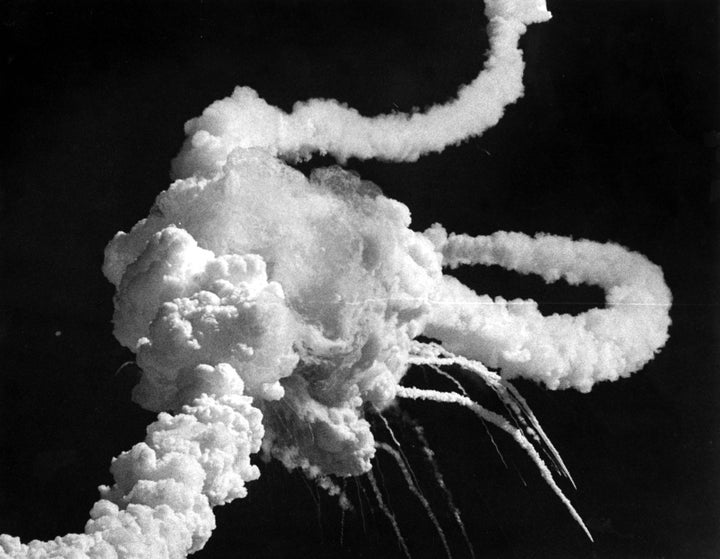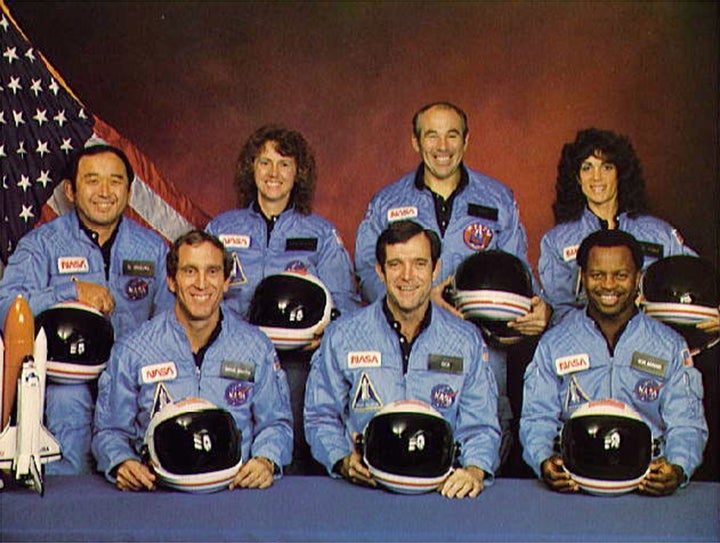Challenger exploded just 73 seconds after liftoff on Jan. 28, 1986.
A film crew hunting for WWII aircraft lost in the Bermuda Triangle has discovered a 20-foot segment of the space shuttle Challenger off the coast of Florida.
Challenger was destroyed in an explosion 73 seconds after liftoff on Jan. 28, 1986 as millions watched on television.
All seven aboard were killed.
“Of course, the emotions come back, right?” NASA manager Michael Ciannilli, who confirmed the find, told The Associated Press. “My heart skipped a beat, I must say, and it brought me right back to 1986 … and what we all went through as a nation.”
The History Channel, which will air “The Bermuda Triangle: Into Cursed Waters” on Nov. 22, posted footage of the discovery online. The network noted it was the first Challenger wreckage discovered in more than 25 years:
AP said the Challenger segment ― property of the U.S. government ― will remain in the water until NASA determines what to do next.
The Challenger disaster led to a nearly three-year pause in shuttle flights. An investigation found that cold temperatures overnight had caused O-ring seals to fail in the solid rocket booster segment joints.
NASA Administrator Bill Nelson said the Challenger disaster “will forever be seared in the collective memory of our country.”
“For millions around the globe, myself included, Jan. 28, 1986, still feels like yesterday,” Nelson said in a news release. “This discovery gives us an opportunity to pause once again, to uplift the legacies of the seven pioneers we lost and to reflect on how this tragedy changed us.”
While the expedition was filmed for a series on the Bermuda Triangle, the piece of the shuttle was discovered in waters outside of the area traditionally considered part of the region. NASA said it was found off Florida’s Space Coast, northwest of the Bermuda Triangle.

The Bermuda Triangle is a region where, according to folklore, planes and ships often go missing without a trace. However, the National Ocean Service said there’s no evidence planes and ships are more apt to disappear in the Bermuda Triangle than any other similarly large region of ocean.
The History Channel said the expedition was hunting for the remains of a PBM Martin Mariner rescue plane that vanished on Dec. 5, 1945.
“Instead of World War II-era plane debris, the team discovered a modern-looking aviation structure,” the network said in a news release. Retired astronaut Bruce Melnick reviewed the footage and, suspecting it was a shuttle segment, got in touch with NASA.
The Challenge disaster claimed the lives of shuttle commander Francis R. “Dick” Scobee, pilot Michael J. Smith, payload specialist Gregory B. Jarvis, mission specialists Ronald E. McNair, Ellison S. Onizuka, and Judith A. Resnik, and Sharon Christa McAuliffe, a teacher selected from more than 11,000 applicants for the NASA Teacher in Space Project.

Credit: Source link